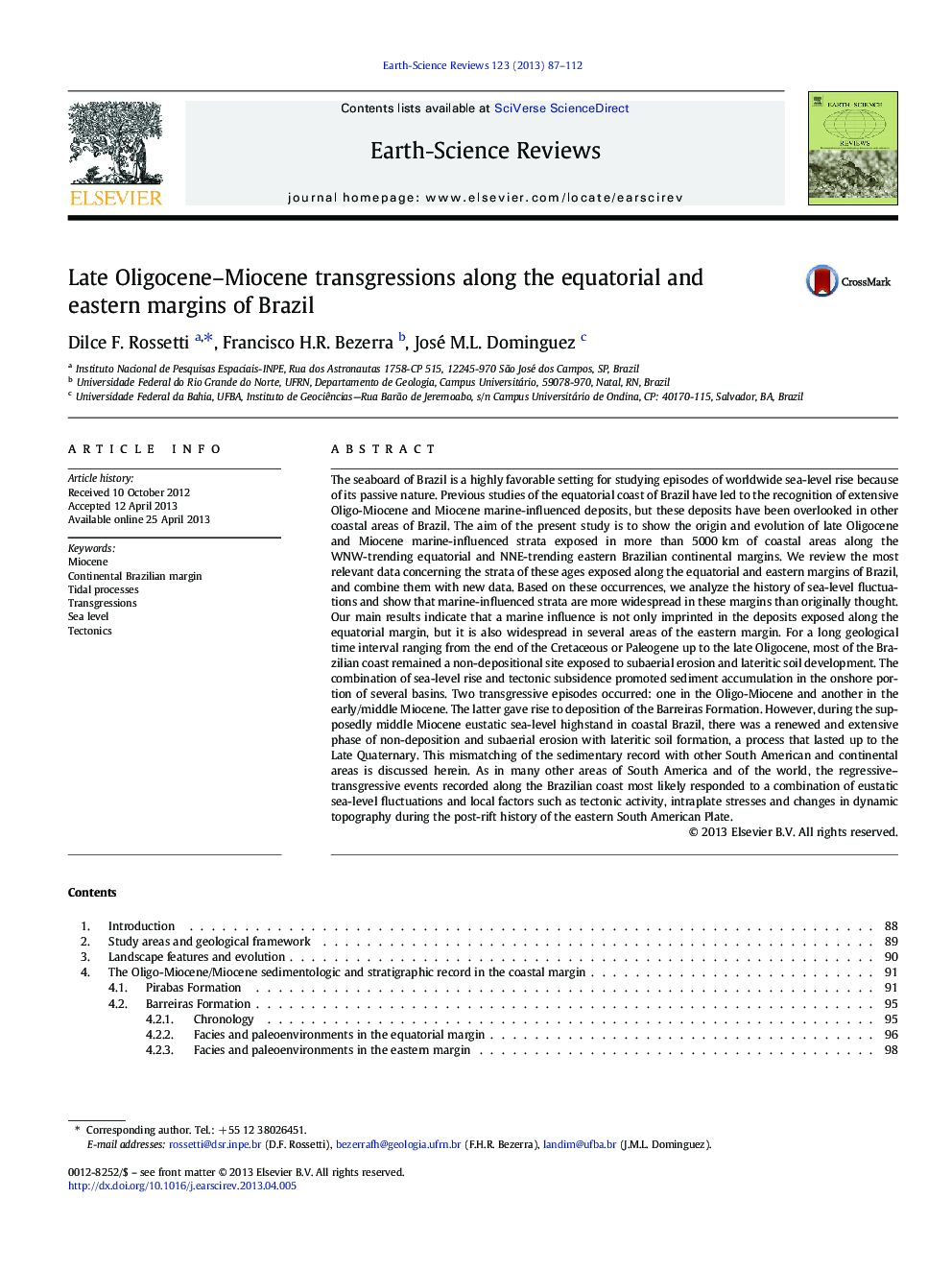| کد مقاله | کد نشریه | سال انتشار | مقاله انگلیسی | نسخه تمام متن |
|---|---|---|---|---|
| 4725827 | 1639979 | 2013 | 26 صفحه PDF | دانلود رایگان |
• Late Oligocene and Miocene deposits occur along the Brazilian coast.
• These deposits were mostly formed by tidal processes in a coastal setting.
• They responded to two main marine transgressions.
• The transgressive events are in offset with the Miocene highstand.
• Syn-depositional tectonics might have caused this mismatching.
The seaboard of Brazil is a highly favorable setting for studying episodes of worldwide sea-level rise because of its passive nature. Previous studies of the equatorial coast of Brazil have led to the recognition of extensive Oligo-Miocene and Miocene marine-influenced deposits, but these deposits have been overlooked in other coastal areas of Brazil. The aim of the present study is to show the origin and evolution of late Oligocene and Miocene marine-influenced strata exposed in more than 5000 km of coastal areas along the WNW-trending equatorial and NNE-trending eastern Brazilian continental margins. We review the most relevant data concerning the strata of these ages exposed along the equatorial and eastern margins of Brazil, and combine them with new data. Based on these occurrences, we analyze the history of sea-level fluctuations and show that marine-influenced strata are more widespread in these margins than originally thought. Our main results indicate that a marine influence is not only imprinted in the deposits exposed along the equatorial margin, but it is also widespread in several areas of the eastern margin. For a long geological time interval ranging from the end of the Cretaceous or Paleogene up to the late Oligocene, most of the Brazilian coast remained a non-depositional site exposed to subaerial erosion and lateritic soil development. The combination of sea-level rise and tectonic subsidence promoted sediment accumulation in the onshore portion of several basins. Two transgressive episodes occurred: one in the Oligo-Miocene and another in the early/middle Miocene. The latter gave rise to deposition of the Barreiras Formation. However, during the supposedly middle Miocene eustatic sea-level highstand in coastal Brazil, there was a renewed and extensive phase of non-deposition and subaerial erosion with lateritic soil formation, a process that lasted up to the Late Quaternary. This mismatching of the sedimentary record with other South American and continental areas is discussed herein. As in many other areas of South America and of the world, the regressive–transgressive events recorded along the Brazilian coast most likely responded to a combination of eustatic sea-level fluctuations and local factors such as tectonic activity, intraplate stresses and changes in dynamic topography during the post-rift history of the eastern South American Plate.
Journal: Earth-Science Reviews - Volume 123, August 2013, Pages 87–112
